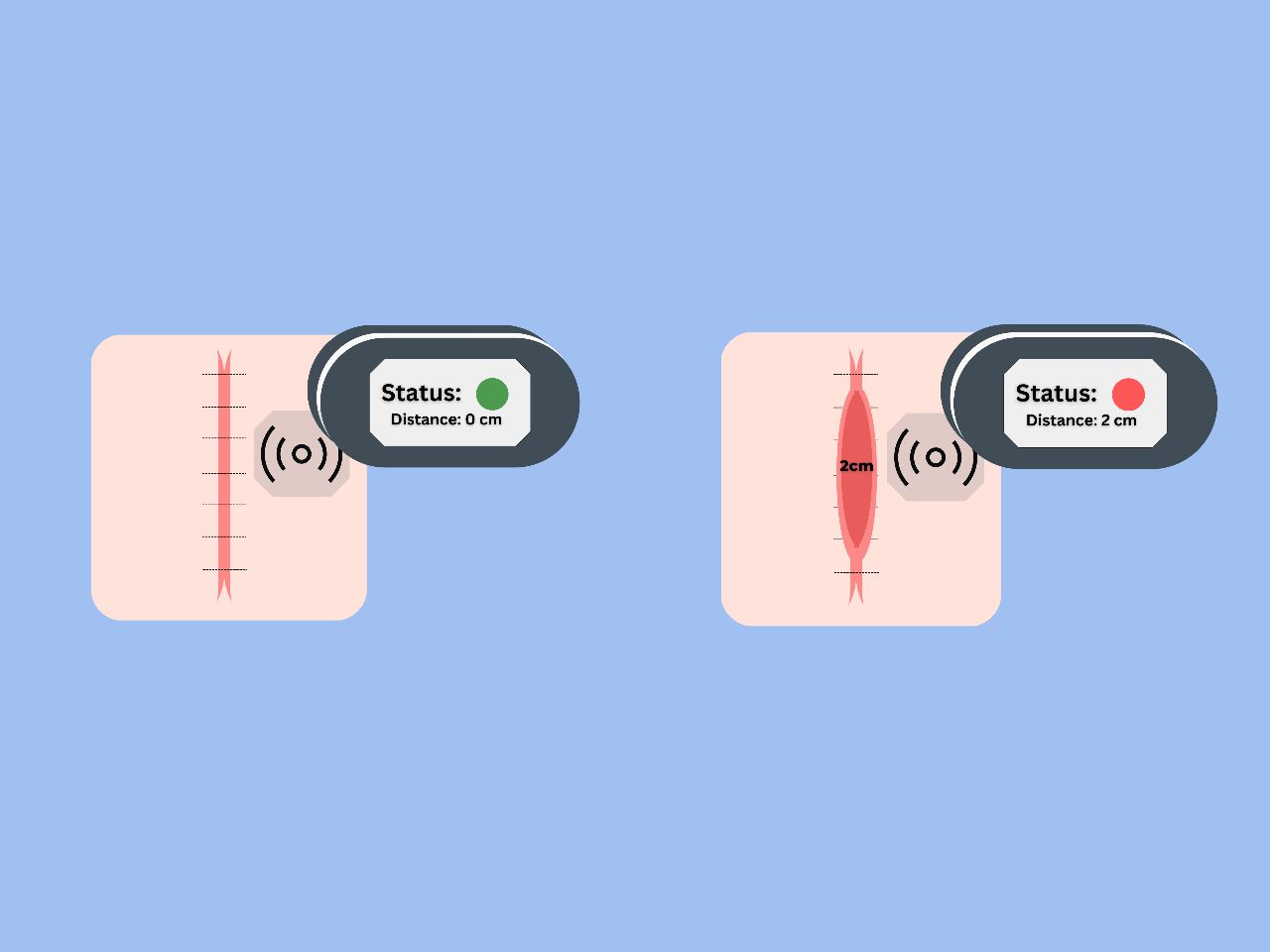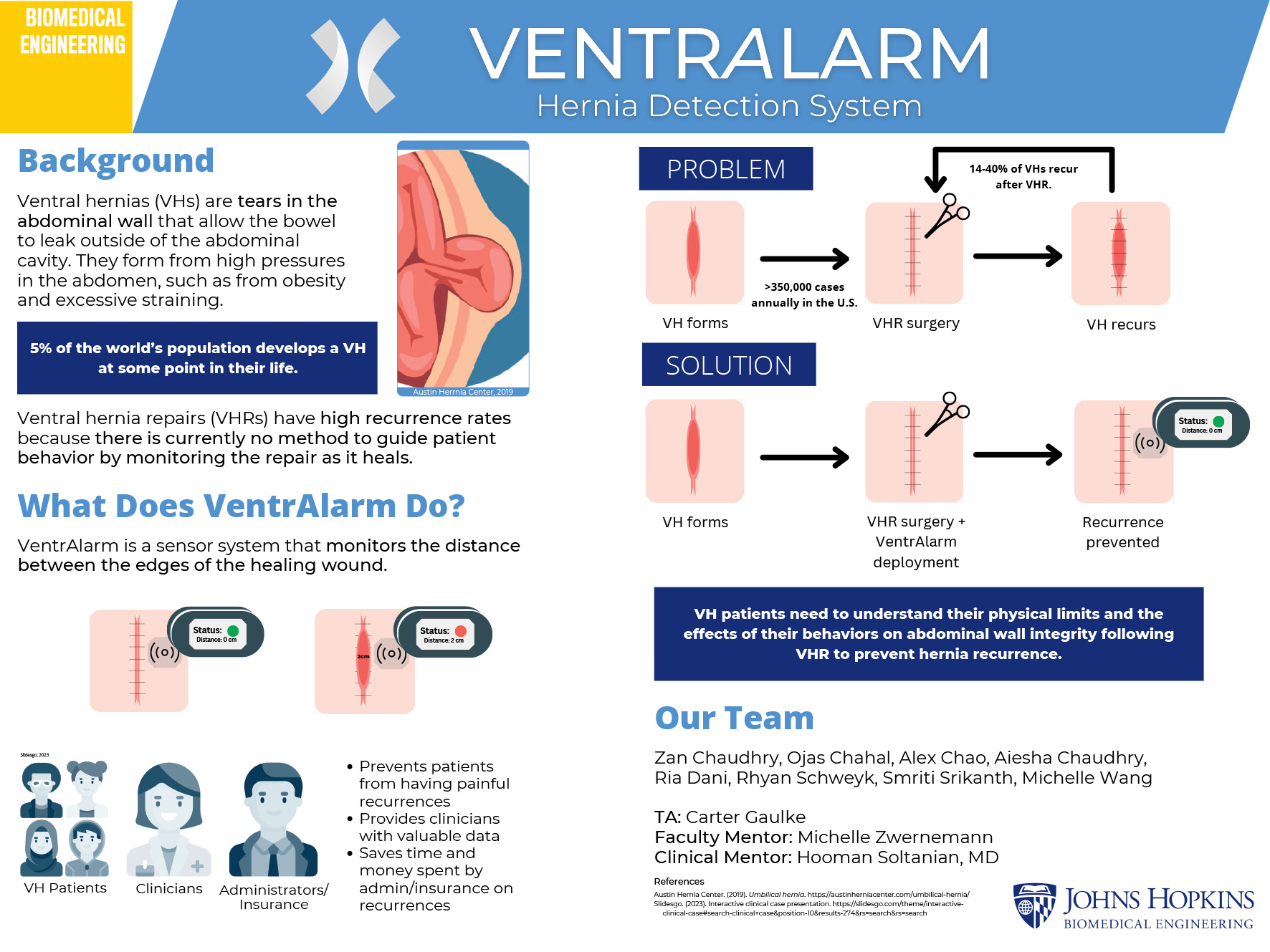VentrAlarm: Post-Operative Monitoring of Ventral Hernia Repairs
Team: VentrAlarm
- Program: Biomedical Engineering
- Course: EN.580.497 Advanced Design Team
Project Description:
Ventral hernias (VHs) involve a rupture in the anterior abdominal wall, allowing viscera to extrude from the abdominal cavity into a hernia sac. When untreated, VHs can grow in size and lead to a variety of complications, including bowel obstruction and potentially fatal bowel ischemia. Over 350,000 ventral hernia repair (VHR) surgeries are performed each year in the United States. However, 14-40% of VHs recur within 10-12 years after VHR. Furthermore, diagnosing a recurrent VH in its early stages is challenging. Physical examinations miss up to 31% of VHs, and CT scans are unreliable due to high interobserver variability. Recurrent VHs often go undetected until the hernia has enlarged to the point of requiring another complicated procedure. There is currently no way of assessing the integrity of a VHR post-operatively over time. Furthermore, while clinicians are aware of the general risk factors for VH recurrence (such as excessive tension on the repaired midline), little research has been done on the specific behaviors or events in a patient’s daily life that can lead to recurrence. Our solution aims to reduce VH recurrence by improving postoperative monitoring for VH patients. Our technology consists of a system that can monitor the motion of the abdominal wall edges during a patient’s daily activities following a VHR. Considering that patients are usually unaware of the physical state of their repair during the healing process, this system has the potential to greatly reduce VH recurrence by guiding patient behaviors and aiding clinicians in identifying the specific causes of recurrence.
Project Photo:
Shown here is an image of Ventralarm technology. On the left is an intact hernia repair with sutures across the wound repair. It has a signal coming out of the repair and an external device receiving the signal. On the external device’s display, there is a label named “Status” with a green circle next to it, indicating an intact repair. There is also a label of “Distance: 0cm”, approximating the distance between the two edges of the fascia. On the right is a failed hernia repair. The defect size is labeled as 2cm. It also depicts a signal being emitted from the area and an external device receiving the signal. On the external device’s display, there is a label named “Status” with a red circle next to it, indicating a hernia recurrence. There is also a label of “Distance: 2cm”, approximating the separated distance between the two edges of the fascia.




